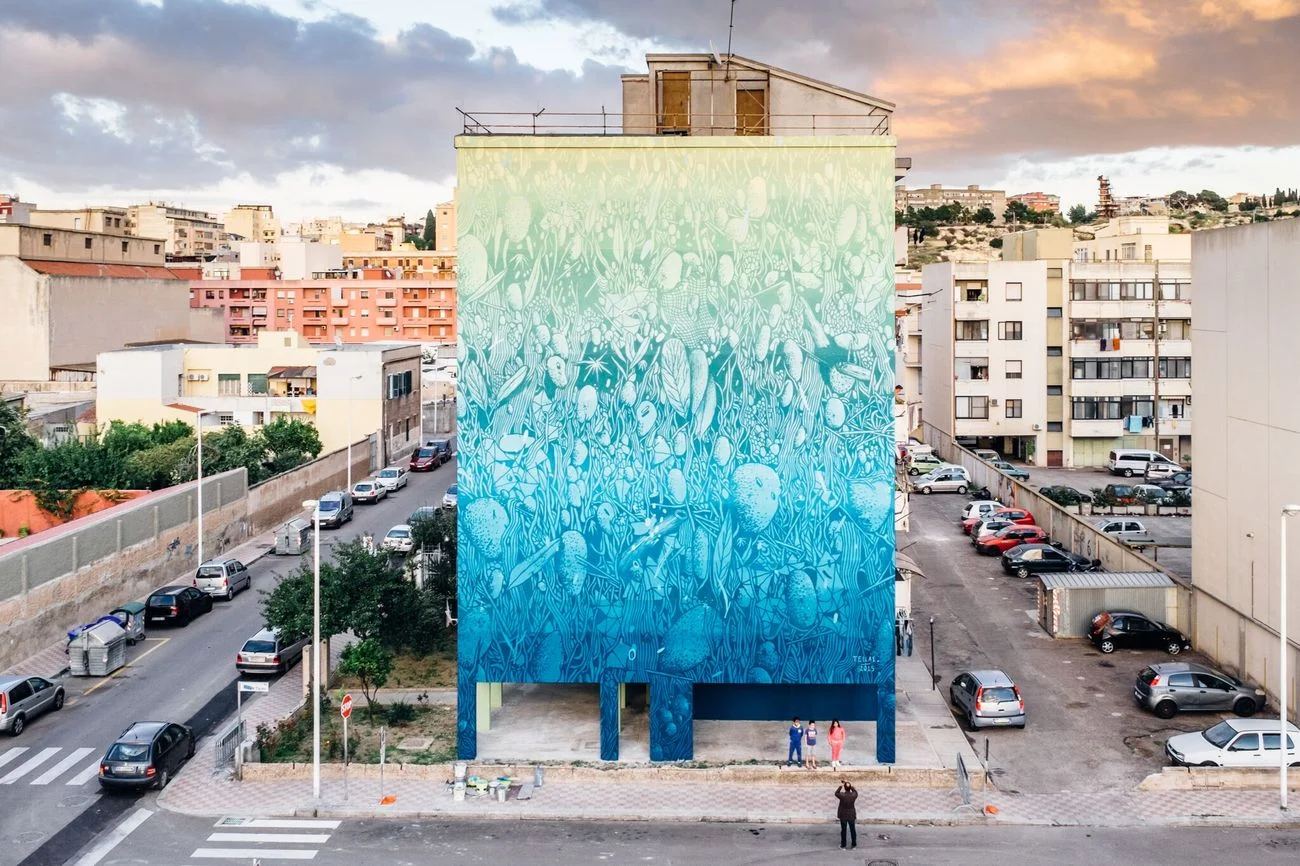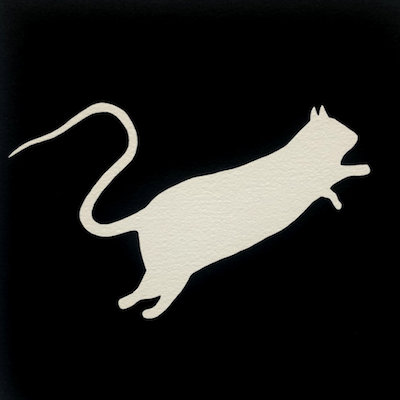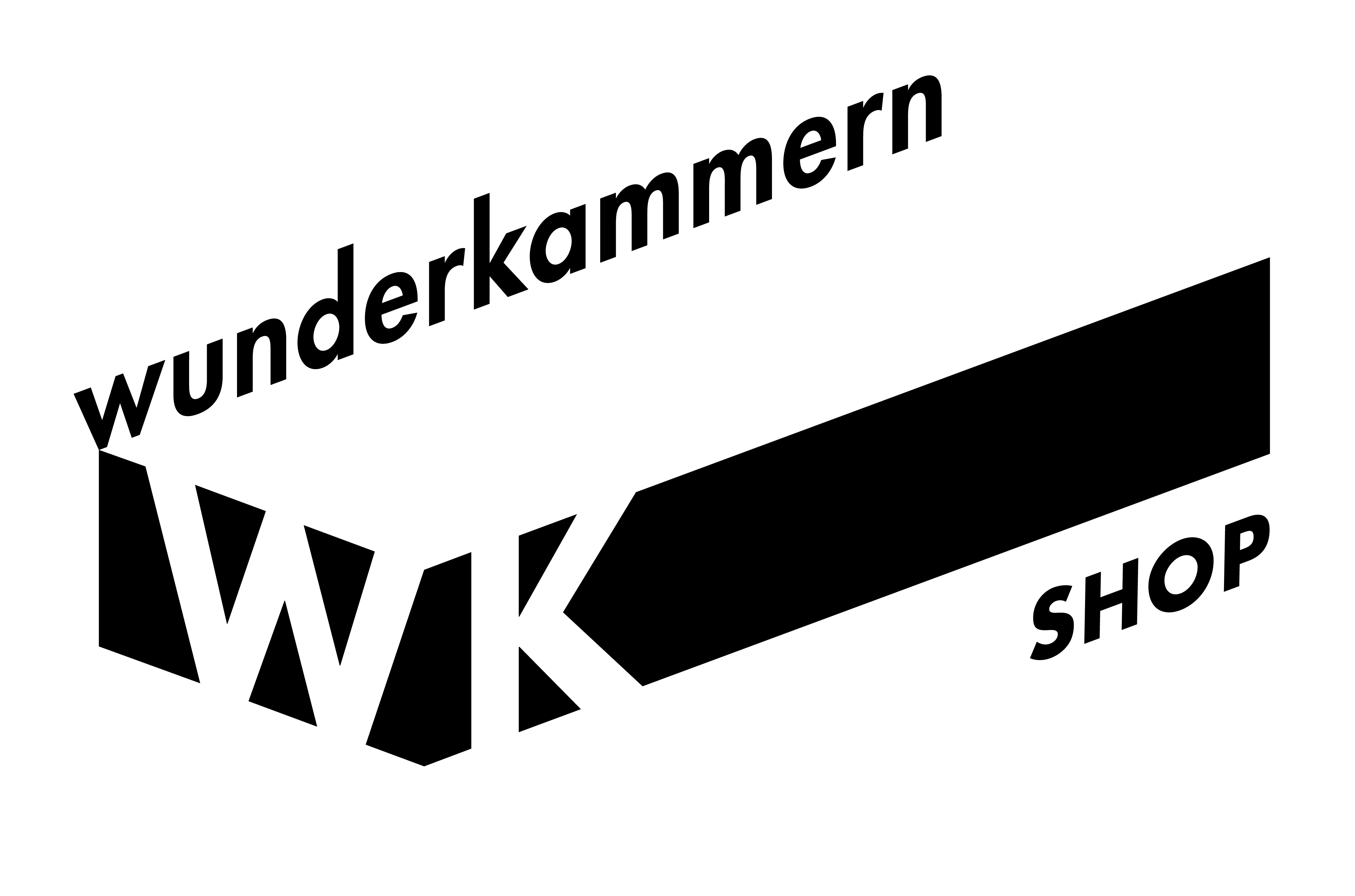
Tellas is one of the most recognized street artists on the contemporary international scene. Born in Cagliari in 1985, his art emerges from the arid and isolated landscapes of Sardinia, transforming what is visually ordinary into an inner and aesthetic landscape.
Visual Roots: Nature Interiorized
Tellas’s work is deeply rooted in an intimate perception of natural elements: leaves, branches, pools of water. These elements surface in his murals, drawings, and installations as an abstract and meditative syntax, dense with delicate yet assertive signs.
His poetics are nourished by a contemplative approach to nature that becomes visual form — a silent code made of rhythms, textures, and minimal patterns that evoke places, memories, and atmospheres.
An Experimental Visual Language
Tellas does not limit himself to walls: he also works on paper (drawings and graphics), printmaking, audio-video installations, and even multimedia projects such as Spettro. His focus on detail and the presence of emptiness—or near emptiness—makes his work both recognizable and rarefied: few colors, few lines, a rhythm that evokes without naming.
Public Scale and Contextual Awareness
Tellas has developed a career in urban spaces, creating large-scale murals in European, American, and Asian cities, always conceived with strong attention to local context.
Works such as Wrapped in Rome demonstrate how his painting can dialogue with architecture, integrate into the urban fabric, and transform entire surfaces into suspended landscapes.
One of his most acclaimed works is Under the City, created in Cagliari, which testifies—through lines and forms—to his connection with his roots and with the idea of a lived, mutable, and shared public space.
A Meditative, Non-Directive Approach
Tellas favors personal reflection over visual rhetoric. His works stem from observation of place, from memory, and from a strong need for introspection. He does not seek slogans or explicit messages, but the emotional texture of space delicately transformed.
His choice to let his works age naturally is also part of this approach: time and weather are not enemies, but elements that allow the work to keep breathing with the city, avoiding artificial restoration that would alter its original intensity.
Public Art as Inner Landscape
Whether painting walls, working on paper, or intervening in evocative environments, Tellas transforms the surface into a meeting point between the natural and the artificial. His drawings—even on monumental murals—function as fragments of mental landscapes, designed to slow the gaze, generate stillness, and bring lived space closer to the idea of landscape.
Tellas does not simply depict nature: he reimagines it as a sensitive experience, made possible in the most unexpected places. His art is slowness and listening, visibility and sharing.
In an urban panorama where images shout, his drawing whispers—and in that whisper resides the depth of the mark, opening the way to inner space.




 Register
Register
